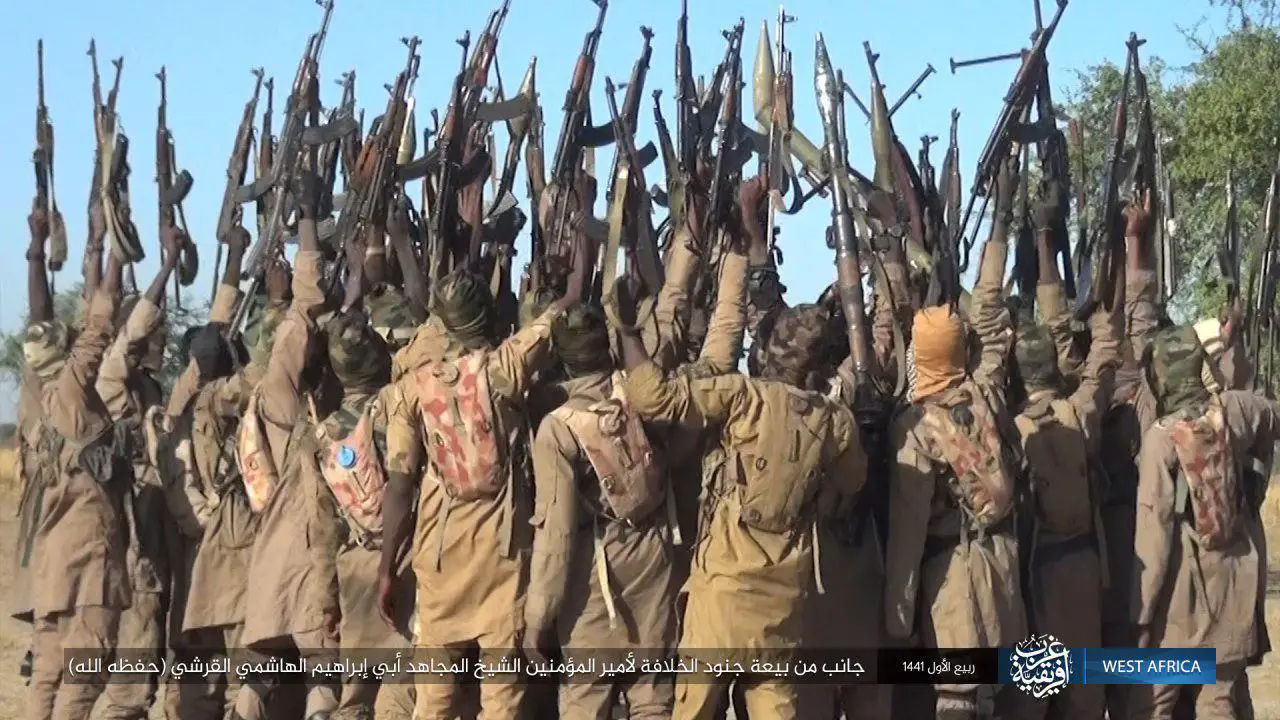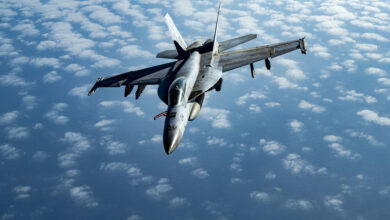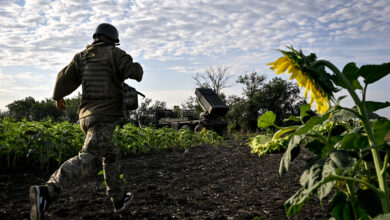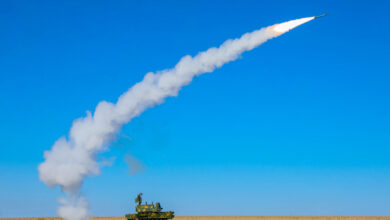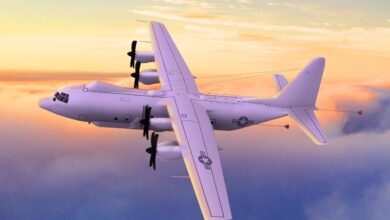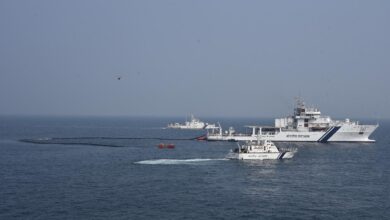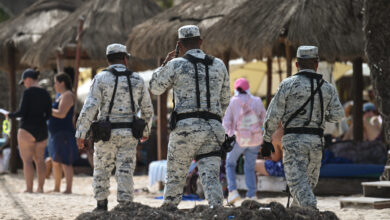At least 10 Nigerian soldiers were killed and nine severely injured in an ambush near Damboa later claimed by Islamic State, military sources told AFP on Thursday.
Another 12 soldiers were missing after a column of troops on patrol was ambushed on Wednesday, November 6 in the Damboa district of Borno state, a military officer told AFP on condition of anonymity.
News of the latest deadly incident in northeast Nigeria came as ISIS propaganda agency Amaq released images that it said showed members of Islamic State’s West Africa Province affiliate pledging their loyalty to the new ISIS “Caliph.”
“We lost 10 troops in the intense fighting with the terrorists who ambushed our soldiers conducting a clearance operation in the area,” said the officer, who asked not to be identified because he was not authorised to speak about the incident.
“Nine soldiers were injured and 12 are still missing.”
A second military officer who gave the same casualty toll said the troops came under attack while returning to their base in Damboa.
The soldiers were forced to withdraw after an hour-long battle in which nine insurgents were also killed, he said.
Troops destroyed one ISWAP truck and recovered three Kalashnikov rifles, while the militants burned five military vehicles and took away a pickup truck and six machine guns, he said.
In a Thursday statement, ISIS said ISWAP fighters on Wednesday “ambushed and repelled” the Nigerian Army in “Mashmi,” an apparent reference to Muchima village.
Muchima and near neighbour Machima are two small villages around 25 km northwest of Damboa.
ISIS claimed 22 soldiers were killed and others injured, three vehicles including an armored vehicle were burned, and that five 4×4 vehicles were captured.
In a separate release, Amaq said that the Nigerian Army had “attacked” the village, and the resulting clashes with ISWAP fighters lasted “several hours.”
Update November 8 Amaq on Friday released five images which included pictures of two dead bodies that it said were from the Muchima attack. They also showed a range of weapons and ammunition that ISWAP fighters captured, as well as a Nigerian Army 4×4 pickup truck and what appeared to be a Panhard VBL light armored vehicle.

Later on Thursday, ISIS claimed two Tuesday ISWAP attacks in Buni Gari, which is around 70 km west of Damboa in Yobe state near the road between Biu and Damaturu.
One statement claimed clashes led to an unspecified number of casualties among members of the Civilian Joint Task Force militia that works alongside troops, and that their base was burned.
In the second release, ISIS claimed that ISWAP fighters targeted a Nigerian Army armored vehicle and a 4×4 with a roadside bomb, saying that the IED “damaged the vehicle, killing and wounding those riding inside.”
Amaq then released images that it said showed ISWAP members pledging bayah to new ISIS leader Abu Ibrahim al-Hashimi al-Qurayshi. More than 30 heavily armed militants can be seen in the images.

Attacks in the increasingly volatile Maiduguri-Biu-Damuturu triangle
Although ISWAP’s main area of operations is further east in the Lake Chad area, the group has intensified attacks on military locations in the Maiduguri-Biu-Damuturu triangle in recent months.
Located in that triangle, Damboa town, the headquarters of the Local Government Area, is around 85 km (53 miles) southwest of Borno state capital Maiduguri.
AFP’s military sources initially attributed the Wednesday attack near Damboa to the Boko Haram faction led by long-time leader Abubakar Shekau which is also known as JAS. The area of the attack is near its Sambisa forest stronghold.
Notable militant activity in the area in recent months includes ISIS claiming ISWAP fighters killed 25 Nigerian troops in Benisheikh in late July, and earlier that month claiming that ISWAP fighters fought off a Nigerian military assault in the Damboa area.
On October 19, at least four troops were killed near in clashes with ISWAP fighters near Jakana, which is near Benisheikh, around 75 km north of Damboa.
But Shekau’s Boko Haram faction has also claimed its fighters have carried out attacks. In an October 25 statement, JAS said its fighters attacked a Nigerian Army checkpoint in the Damboa area, claiming soldiers retreated and that weapons and ammunition were captured.
Media reporting on incidents involving Boko Haram and ISWAP appears to have reduced in recent weeks, although ISWAP in particular continues to claim attacks, primarily in the Lake Chad area.
On September 13, the army said Chief of Army Staff Lieutenant General Tukur Yusuf Buratai had warned that referring to Boko Haram, JAS or ISWAP by name “could amount to supporting or encouraging terrorism,” and that “giving prominence to the criminal activities of the terrorists group through sensational headlines and fake news in both electronic and print media could also amount to tacit support to terrorism which violates the Terrorism Prevention Act 2011.”
That came after repeated statements from the army and president that Boko Haram had been defeated.
Buratai in May again said Boko Haram was defeated and the Nigerian military is now fighting what he reportedly described as an international criminal gang known as ISWAP. In July, a spokesperson for President Muhammadu Buhari again insisted that Boko Haram was defeated, blaming ongoing violence in the northeast on international jihadists that were exploiting porous borders with Sahel countries.
A decade of Islamist insurgency
The jihadist group known as Boko Haram began its bloody insurgency in northeastern Nigeria in 2009, but it has since spread into neighboring Niger, Chad and Cameroon, prompting a regional military response.
Boko Haram split into two factions in mid-2016. Shekau’s JAS faction is notorious for suicide bombings and indiscriminate killings of civilians. Shekau pledged allegiance to ISIS leader Abu Bakr Al-Baghdadi in March 2015, but ISIS central only gives formal backing to the other faction, which it calls Islamic State West Africa Province.
The ISWAP faction, which largely focuses on attacking military and government targets, was led by Abu Mus’ab Al-Barnawi, but in March, audio recordings revealed that ISIS appointed Abu Abdullah Idris bin Umar, also known as Ibn Umar al-Barnawi and Ba Idrisa, as ISWAP leader. ISIS has not yet made a public statement confirming the change. On September 10, the United States added Ba Idrisa to its Specially Designated Global Terrorist list, but did not specify which faction he belongs to.
The U.S. assesses that Boko Haram and ISWAP are responsible for more than 35,000 deaths since 2011. More than two million people have been displaced by the conflict, sparking a dire humanitarian crisis in the region. In September, the International Committee of the Red Cross said that nearly 22,000 people, mostly children, are missing as a result of the northeast Nigeria insurgency.
With reporting from AFP

